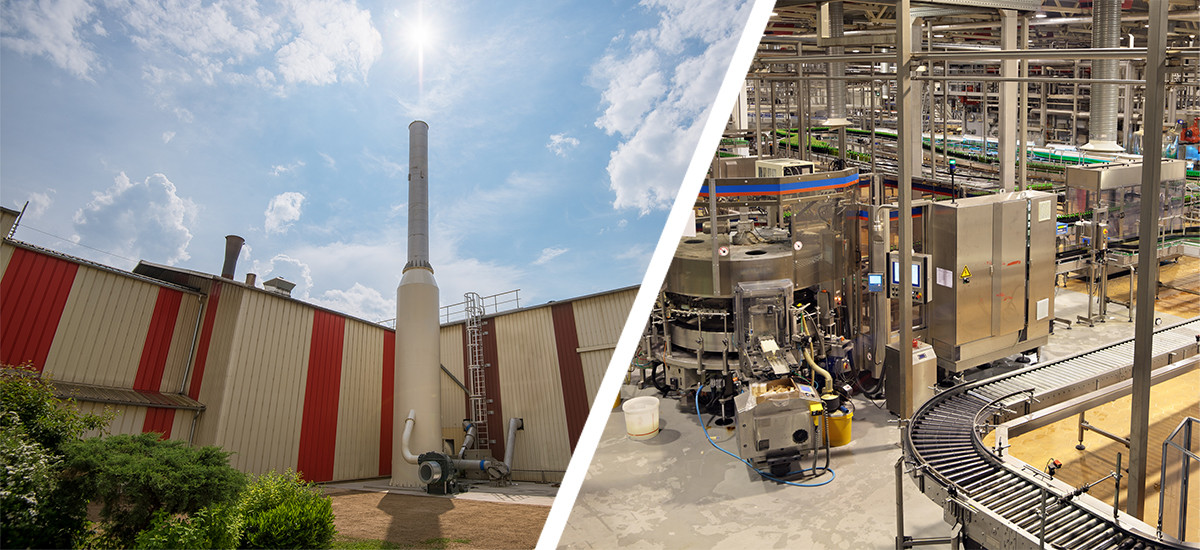19/6/2023
Due to the population increase in Türkiye and the world as a whole, the need for production is also on the rise, while the increasing consumption demand and production areas such as industrial facilities are becoming more and more functional.
Industrial buildings are complex facilities where production takes place continuously, and electricity, flame sources and machinery and equipment that may cause fire due to overload are actively used.
Analysis is needed of the fire load of easily flammable materials, flammable and combustible materials produced/stored in industrial facilities, and of the risks that may cause fire. Otherwise, toxic gases that might be released during an industrial facility fire could affect the facility personnel and the local wildlife more negatively than a fire occurring in other building types, causing loss of life and great loss of property.
Risk analysis studies to be carried out in these facilities are important because of the high dangerous substances and human density in the industrial buildings.
The main goals of running risk analysis for industrial buildings are:
- Bringing the facility into compliance with the relevant national and international regulations and standards
- Fulfilling the duties and legal responsibilities underlined in Article 6 of the Turkish Regulation on the Protection of Buildings from Fire
- Revising and improving the current passive or active fire extinguishing systems in line with the increase in the production capacity of the facility
- Changing the purpose of use of the buildings in the facility or bringing a building to a level whereby a fire occurring in the new building can be controlled even in the event of a building change
- Ensuring that facilities built long before the regulation’s publication date but that have high risk meet the requirements of the regulation, or checking the suitability and adequacy of existing systems
- Choosing the right systems and reducing product purchase/labour costs by making risk analyses of existing facility buildings for different purposes
- Preventing major financial loss and hidden costs that may occur if production stops for a certain period of time after a fire
- Reducing facility insurance premiums through risk analysis
- Facilitating the license processes for the facility to be obtained from the fire department or local municipalities.
While performing risk analysis in industrial facilities, the following issues are evaluated:
- First, the architectural, electrical and mechanical projects of the industrial building are examined, including the fire compartment requirements of the building, building elements and facade, emergency evacuation possibility, escape routes, firefighting approach and intervention possibilities.
- The fire detection and alarm system requirement of the building, the placement of system equipment in the field, access to the fire control panel and communication facilities are evaluated.
- Based on the fire scenario of the building and the operability,adequacy of the equipment should also be checked.
- Hydraulic calculations of fire extinguishing and suppression systems, equipment placements, qualifications and extinguishing capabilities are evaluated. The calculations and projects of the smoke control systems in the building should be checked.
Although there is no undergraduate or official certificate programme at a university in order to be able to conduct risk analysis in the field of fire engineering in Turkey, Efectis – a specialist in the science of fire for 70 years – provides detailed evaluation of the active extinguishing systems of the facility in project and field controls, as well as fire response. Based on the data and experience gained from fire resistance laboratories, it evaluates passive fire safety measures from a broad perspective and makes detailed reports to the employer.
As a result of the risk analysis, the following data are obtained:
- Based on the fire load, hazard class, production method, material storage type and fire safety systems of the facility, current situation improvement suggestions are presented.
- By classifying the risks in the facility, we ensure that critical risks are given priority. In this way, the employer consciously plans short or long-term activities that increase fire safety.
- As a result of risk analysis, production and storage methods can be improved and existing risks minimised.
- By determining the fire compartment requirements in the building, the spread of flame and fire effluents to neighbouring spaces are eliminated, thereby ensuring the safety of life and property.
- In addition, education of occupants concerning fire safety remain important and procedures may be adapted.
For more information, please contact turkiye@efectis.com

